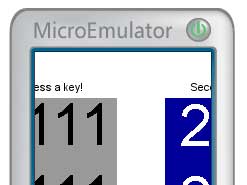Back to work with: Capuchin, Jarpa, Widgets, KuneriLite, Janus, Croozeus.. just to start!
I’m finally back to work after some holidays (from some days already… but first work days right after holidays are always full of tasks, don’t you think?)
Anyway, I came back just in time to find a lot of cool news!

First of all, the database of this blog was not working anymore, and so, if someone of you has tried to post comments, would have most probably failed. Anyway, after a night of passion, it is newly working like a charm!
For those of you who missed it (ahem…) Adobe held an interesting eSeminar about Project Capuchin, and the recording is available here: Project Capuchin Adobe eSeminar.
Meanwhile, Felipe Andrade released an LBS enabled MIDlet that makes use of Jarpa to allow Java ME and Flash Lite to intercommunicate.
On Forum Nokia, the Wiki was revamped with a new homepage layout, and with some cool introductions. One of them is the Featured Articles section, that will highlight an interesting Wiki article each week. And with great pleasure I noticed that 2 articles I’ve written were featured in past weeks:
- How to use Google Maps data in mobile applications
- Displaying GPS position using Google Maps images in Flash Lite
Also, a new contest was launched, this time regarding Widget Development, and full rules are available here: Forum Nokia Widget Contribution competition.
You should know that I’m also a great fan of KuneriLite and its team, and so I can not avoid to feature Pasi Manninen tutorial on how to Take, play and send video file from Flash Lite to server: superb!
Talking about FlashLite and Symbian, Leonardo Risuleo released his Janus Symbian Engine, the custom made extension that will help you improve Flash Lite functionalities, as open source! I definitely think this is great, and that there should be more high-quality open-source projects like this in mobile environment. In this sense, mobile is yet far from web development.
Also, Croozeus is doing a great work with his website dedicated to S60 Python developers, and he recently completed the first 5 applications (with full source code). Also, if you want to fully understand and learn PyS60, you should not miss out his talks!
And, latest fresh news, Alessandro Pace (a.k.a. Biskero) was yesterday declared Forum Nokia Chamption of the Month: congratulations goes to him for this award as for its incredible effort and results in the FlashLite community!
That’s a (really) rapid summary of what I’ve missed on these holidays (but I’ve not missed this one!), and a lot of other things are still around… maybe should I work more? ![]()













Coker 3:37 pm on March 8, 2009 Permalink
Hello,
Please does Kunerilite work on Series 40 phones? Also what alternatives do we have for Sony Ericsson?
Thanks